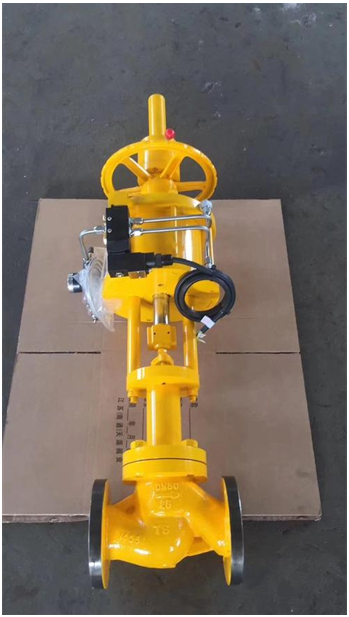Magpie Valve Selection: Accurate Matching Ensures Reliable Control
Valve Technology Sharing: In-Depth Material Selection Analysis for Valves in Chlorine and Liquid Chlorine Applications: From Corrosion Mechanisms to Engineering Practice
Chlorine gas (Cl₂) and liquid chlorine (liquid Cl₂), known for their strong oxidizing properties, exhibit drastically different corrosive behaviors depending on moisture content, temperature, and pressure. A critical concern is that even so-called "dry chlorine" (moisture <50 ppm) can quickly transition into a "slightly moist chlorine" environment due to ambient humidity or condensation in pipelines, triggering unexpectedly severe corrosion. This article explores material selection logic and key considerations for valve components based on corrosion mechanisms and real-world engineering practices.

Corrosion Mechanism: At ambient temperatures, dry chlorine is relatively inert. It reacts slowly with most metals (e.g., carbon steel, stainless steel), with corrosion rates below 0.05 mm/year.
Hidden Risk: Once moisture is introduced (via packing gland humidity or pipeline condensation), Cl₂ reacts with H₂O to form HCl and HClO, creating a highly acidic and chloride-rich environment. Corrosion rates can increase by over 1,000 times (up to 5–10 mm/year), leading to pitting, crevice corrosion, and stress corrosion cracking (SCC).
Corrosion Behavior: In the absence of free water, corrosion is negligible. However, industrial-grade liquid chlorine often contains trace moisture (≤50 ppm). During valve operation, localized vaporization can concentrate moisture, forming "micro-electrochemical corrosion cells" that particularly attack seals, threads, and crevices.
Preferred: Hastelloy C-Series (C-276 / C-22)
Composition Advantages: High Cr (14–16%) resists oxidation; high Mo (15–17%) counters chloride pitting; W (3–4.5%) strengthens crevice corrosion resistance; Ni base resists intergranular attack. It's the only alloy that reliably withstands both wet chlorine corrosion and liquid chlorine embrittlement.
|
Material |
Wet Chlorine (500 ppm, 25°C) |
Liquid Chlorine (-30°C, 50 ppm) |
SCC Sensitivity |
|
SS 316L |
5.2 mm/year (severe pitting) |
Cracks in 3 months |
High |
|
Hastelloy C-276 |
<0.01 mm/year (stable film) |
No visible corrosion |
Extremely low |
Applications: Full-metal disc sealing, corrosion-resistant welded seat overlays, cold-formed bellows (for fatigue resistance), and stems (avoid galling and corrosion wear).
Alternative: Super Duplex Stainless Steel (e.g., 2507)
Only suitable for strictly dry Cl₂ (<20 ppm moisture), low pressure (≤1.6 MPa), and no vibration. With Cr+Mo content >29%, it offers a high PREN (>40) but:
May suffer σ-phase embrittlement below -50°C
Less resistant than Hastelloy in wet Cl₂ (corrosion rate 0.5–1 mm/year)
Dry / Low-Moisture Chlorine (<50 ppm):
Carbon Steel (e.g., Q355B / A105) is acceptable with protective FeCl₂ surface film and corrosion rate <0.1 mm/year, at 1/3–1/5 the cost of Hastelloy.
Engineering Measures: Internal sandblasting + epoxy coating (≥300 μm); weld Hastelloy overlay (e.g., ENiCrMo-4) on flange faces to avoid surface damage during tightening.
Wet Chlorine / Liquid Chlorine (≥50 ppm moisture):
Mandatory: Fully cast Hastelloy C-22 valve body or carbon steel lined with ≥3 mm Hastelloy, to prevent direct contact between steel and Cl₂ that causes intergranular corrosion + hydrogen blistering.
Soft Seals (Seats / Packing)
Filled PTFE (e.g., 15% carbon fiber / 20% glass fiber): Excellent chlorine resistance (swelling <0.5%), usable at -40°C to 150°C. Ideal for cryogenic liquid chlorine and warm Cl₂ gas.
Avoid Rubber: NBR, FKM, etc., react with chlorine causing hardening/cracking — failure occurs in under a month.
Metal Seals (Bellows / Hard Seats)
Bellows must be seamless Hastelloy C-276, cold-formed to preserve corrosion resistance and provide ≥100,000 fatigue cycles (for frequent operation valves).
Hard-faced seats: Stellite 6 overlay + 50 μm Ni-P plating improves chlorine wear resistance and anti-galling.
Bolts/Nuts: Use Inconel 718 or Hastelloy C-22. Avoid 304/316 SS due to hydrogen-induced cracking in moist Cl₂.
Gaskets: PTFE-clad Hastelloy C-276 (3 mm). Avoid water-based sealants.
Actuator Links: Apply HVOF WC-Co spray coating to resist liquid Cl₂ splash corrosion.
Selection Pitfalls to Avoid: 3 "Absolute Don'ts" and 2 Key Engineering Details
❌ Do not assume 316L is chlorine-resistant. It has only 2–3% Mo and is highly susceptible to pitting in moist chlorine (perforation in <2 weeks).
❌ Do not mix carbon steel bodies with stainless trim. The potential difference causes galvanic corrosion, accelerating carbon steel degradation.
❌ Do not ignore liquid chlorine's cryogenic embrittlement. Materials like 304 SS lose impact toughness (<20 J at -30°C), risking brittle fracture.
2. Engineering Details
Moisture Monitoring: Install online H₂O analyzers (accuracy ≤10 ppm) upstream. Automatically switch to Hastelloy valve bodies if moisture >50 ppm.
Crevice-Free Design: Use fully welded bodies and bonnetless bellows globe valves to eliminate gaps like packing glands and gaskets, which promote Cl⁻ accumulation and crevice corrosion (corrosion rate increases 10x when gap <0.1 mm).
Conditions: Liquid chlorine (30 ppm moisture, 1.6 MPa, -30°C)
Solution:
Body: Forged Hastelloy C-22
Trim: Hastelloy C-276 disc + Stellite 6 seat overlay
Seal: Hastelloy C-276 bellows + filled PTFE seat
Outcome: 5 years leak-free, <0.05 mm corrosion on internal parts after inspection.
Conditions: Dry chlorine (20 ppm moisture, 0.8 MPa, 40°C)
Solution:
Body: A105 carbon steel + epoxy internal coating
Trim: Hastelloy C-276 stem + PTFE seat
Special Measure: Silica gel filters on both ends; changed every 3 months
Outcome: 40% cost savings vs. full Hastelloy valve; no visible corrosion after 3 years.
Material selection for valves in chlorine and liquid chlorine service revolves around moisture control and corrosion resistance. Regardless of how "dry" the chlorine is claimed to be, always design for worst-case moist chlorine conditions when selecting trim materials—Hastelloy C-series is the only proven reliable solution. Valve body materials can be optimized for cost if strict dryness is ensured.
Core principles:
Internal components must resist aggressive corrosion and cryogenic embrittlement
Valve structure must eliminate crevices and prevent moisture adsorption
When working with chlorine, systematically assess:
Moisture content (measured, not assumed)
Electrochemical compatibility of materials
Crevice geometry and sealing integrity
Because in chlorine safety, there is no room for luck, only precise adaptation ensures reliability.
We welcome further technical discussion on valve selection and corrosion protection in chlorine service. Let's build stronger defenses for industrial safety together.
